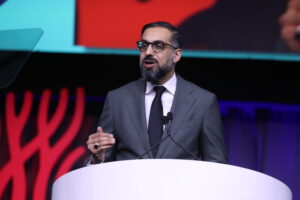
A post-hoc comparison of the BEST-CLI and PREVENT III multicenter prospective randomized controlled trials (RCTs) aimed at evaluating outcomes of vein bypass in chronic limb threatening ischemia (CLTI) patients over the past two decades found that they have “significantly improved” during the study period, “even amidst concerns about declining case volume and training.”
That was the headline findings of a paper presented during a Vascular and Endovascular Surgery Society (VESS) session that took place during the 2025 Vascular Annual Meeting (VAM) in New Orleans (June 4–7), delivered by presenting author Mohamad A. Hussain, MD, an assistant professor of surgery at Harvard Medical School in Boston.
With BEST-CLI demonstrating superiority of vein bypass compared with endovascular treatment for patients with CLTI and the rise in endovascular techniques as vein bypass procedures decline, the authors sought to elucidate concerns over whether open surgery can still be safely and effectively carried out.
The study included 2,114 patients who underwent vein bypass for CLTI—710 in BEST-CLI (2014–2019 and 1,404 in PREVENT III (2001–2003), with the study findings revealing that the primary outcome measure of one-year major adverse limb event (MALE) or death was lower in BEST-CLI at 21% compared with PREVENT III at 38% (adjusted hazard ration [HR], 0.50; 95% confidence interval [CI], 0.40-0.62; p<0.0001). This was an observation found to be consistent across subgroup analyses, which included comparisons between patients in which single-segment great saphenous vein was available for use and those where it was not; those who underwent a femoropopliteal bypass and those who did not; and those aged below 65 and those equal to or above 65.
Meanwhile, major reinterventions—new bypass, surgical revision, thrombectomy or endovascular intervention for graft occlusion—were also lower in BEST-CLI (7.2% vs. 18.4%; adjusted HR, 0.40; 95% CI, 0.28-0.57; p<0.0001) at one year, although rates of any reinterventions were similar (25.8% vs. 29.3%; adjusted HR, 0.90; 95% CI, 0.72-1.14; p=0.39), Hussain and colleagues discovered. The gains detected in the comparison between the two trials “are likely driven by better risk factor optimization, refined surgical techniques and advancements in perioperative care,” Hussain told VESS, acknowledging that the need for graft surveillance and maintenance was underscored by the data showing that the overall burden of reinterventions was consistent between BEST-CLI and PREVENT III.
Speaking to Vascular Specialist, Hussain hailed progress made over the years.
“It’s encouraging to see that patients undergoing vein bypass surgery for CLTI are doing significantly better today than they were two decades ago,” he said. “Thanks to advances in surgical techniques, medical therapy, and overall care, we’re seeing fewer amputations, fewer complications, and better survival—real progress for a population that faces serious health challenges.”












